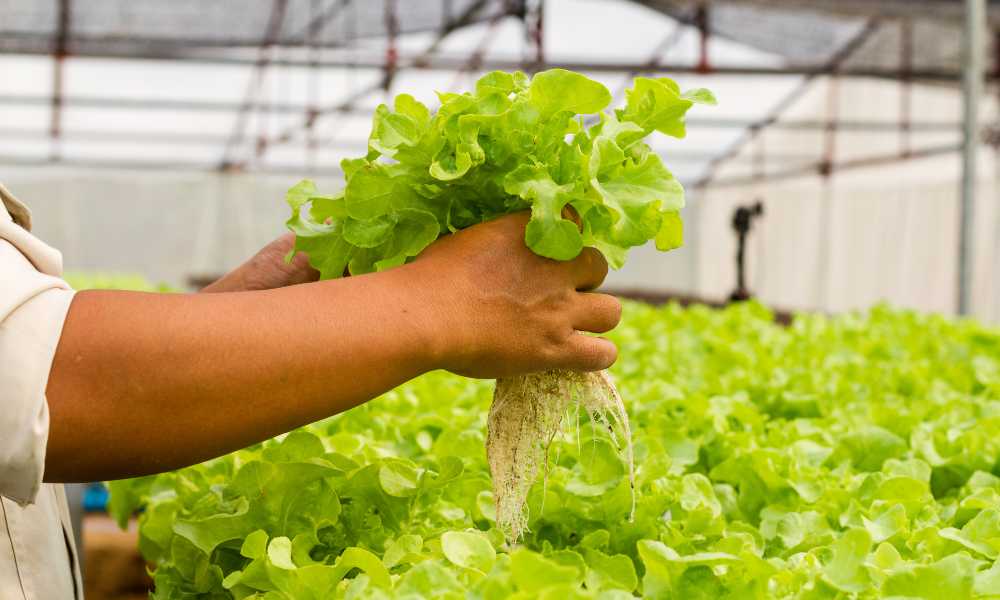Greenhouse-grown vegetables are a staple of a healthy diet, providing essential vitamins, fibers, and minerals. In recent years, however, the debate over the health benefits of greenhouse-grown vegetables has risen as more people become conscious of where their food is coming from. With an increase in both environmental and health concerns surrounding the mass production of food, many wonder if greenhouse-grown vegetables still provide the same nutritional value as traditionally grown ones.
In recent years, the idea of growing vegetables in greenhouses has become increasingly popular. With the rise of global temperatures and climate change, the need for more efficient methods of production has grown. This article will take a closer look at the benefits and drawbacks of greenhouse-grown vegetables to determine whether they are as nutritious as traditionally grown foods.
What are greenhouse-grown vegetables?
Greenhouse-grown vegetables healthy generally contain higher levels of vitamins and minerals than conventionally farmed produce due to their longer growing seasons and more optimal environmental conditions.
These types of vegetables have become increasingly popular in recent years as people seek out healthier options for their meals. These veggies often have a sweeter taste than traditionally farmed produce since they can be grown year-round without compromising flavor or nutrition for convenience. Greenhouse-grown veggies are also more sustainable, as they require less water, land space, and energy to grow compared to traditional methods of farming.
Health benefits of eating greenhouse-grown vegetables
Eating greenhouse-grown vegetables offers a number of health benefits that you may not know about. Not only are greenhouse-grown vegetables thought to be more nutritious than their non-greenhouse counterparts, but they also offer several other health benefits as well.
First and foremost, eating these types of vegetables can help improve overall nutrition levels due to the controlled environment in which they’re grown. In addition to having higher levels of vitamins and minerals, greenhouse-grown vegetables are also harvested at peak ripeness — meaning that all those nutrients you need have had ample time to develop. And since these veggies don’t have to travel long distances from farm to table, they retain their freshness and flavor for longer periods of time.
Health disadvantages of eating greenhouse-grown vegetables
Greenhouse-grown vegetables are becoming increasingly popular due to the convenience of growing food in a controlled environment. But are these vegetables as healthy as their soil-grown counterparts? Various studies suggest that while greenhouse-grown vegetables may offer certain advantages, they can also have some detrimental effects on our health.
First and foremost, it’s important to note that greenhouses limit the amount of natural sunlight available for plants. This lack of light can reduce nutrient content in the product, meaning it won’t be as nutritious as those grown in an open field. Additionally, greenhouse-grown vegetables healthy often rely on chemical fertilizers and pesticides which can contain harmful substances like nitrates and phosphates. These chemicals may find their way into our bodies when we consume them and could potentially result in adverse health outcomes over time.
Is greenhouse-growing vegetables a healthy option?
Greenhouse-grown vegetables are becoming an increasingly popular option for those looking to reduce their environmental impact while still enjoying fresh produce. But are these vegetables just as healthy as traditionally grown options? The answer may surprise you.
Studies have shown that greenhouse-grown vegetables can contain up to twice the amount of vitamins and minerals than conventionally grown options. In addition, greenhouse-grown vegetables have significantly lower levels of pesticides, bacteria and other pollutants than traditional farming methods used in outdoor farms. This means that not only are they better for our environment, but they’re also healthier for us too!
In addition to being healthier, greenhouse-grown vegetables also offer a variety of unique flavor profiles due to the consistent temperatures and higher oxygen levels in greenhouses compared to outdoors.
How much do greenhouse-grown vegetables cost?
Greenhouse-grown vegetables have become increasingly popular in recent years due to the environmental benefits they offer. Growing food in greenhouses allows farmers to reduce water and energy use while also avoiding the effects of harsh weather conditions. But one major concern many consumers have is how much greenhouse-grown vegetable cost compared to traditional outdoor-grown varieties.
In general, greenhouse-grown vegetables tend to cost more than outdoor-grown produce due to the additional resources needed for production such as higher-quality soil, heating and cooling systems, and dedicated labor staff. For example, most experts agree that greenhouse-produced fruits and vegetables are generally fresher and contain more nutrients than those grown outdoors because of their protected environment. Additionally, many consumers feel better about buying local eco-friendly food that supports their community’s green initiatives.
Conclusion
In closing, greenhouse-grown vegetables healthy can be an easy and rewarding experience. With the right environment, substrate and climate, you can easily grow mushrooms with minimal effort. Additionally, growing mushrooms in the greenhouse provide an excellent opportunity to learn more about mushroom biology and how they interact with their environment. Growing mushrooms in a greenhouse also provide an excellent way to add diversity to your crop rotation while providing an organic food source. With some patience and attention, you can provide a successful environment for your mushroom crops to thrive.
